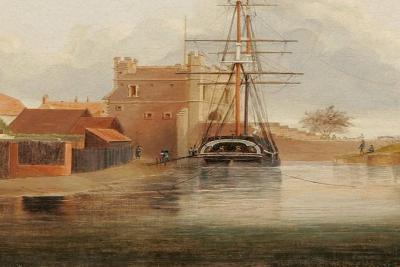Maritime history at Lynn Museum
The port of Lynn has played a vital role in the development of the West Norfolk economy.

Hanse ships known as 'cogs' imported furs, beeswax, fish, cereal, pitch, cloth, timber, salt, and lead. From the 1600s luxury goods such as wine, almonds, and sugar were imported from Europe. In the 1800s, the silting of the river required drastic measures to facilitate inland trade so two cuts were made to straighten the river and improve tidal scouring. mproved docks were constructed in the redundant river bed and connected to the new railway system.
There was still a lucrative and dangerous whaling industry. The Greenland Company was established in the 1770s when whalebone was earning 40 shillings a ton. Whale oil was used in lamps but by the 1800s whaling too was in decline, due to the increased use of gas lighting.
Today the port still handles grain, steel, fertilisers, animal feed, and timber. The museum has a number of interesting maritime objects, including a diver's helmet used by one of the last divers to work in the docks, and a haunting portrait of a Lynn Fishergirl by local artist, Walter Dexter (1876-1958).





